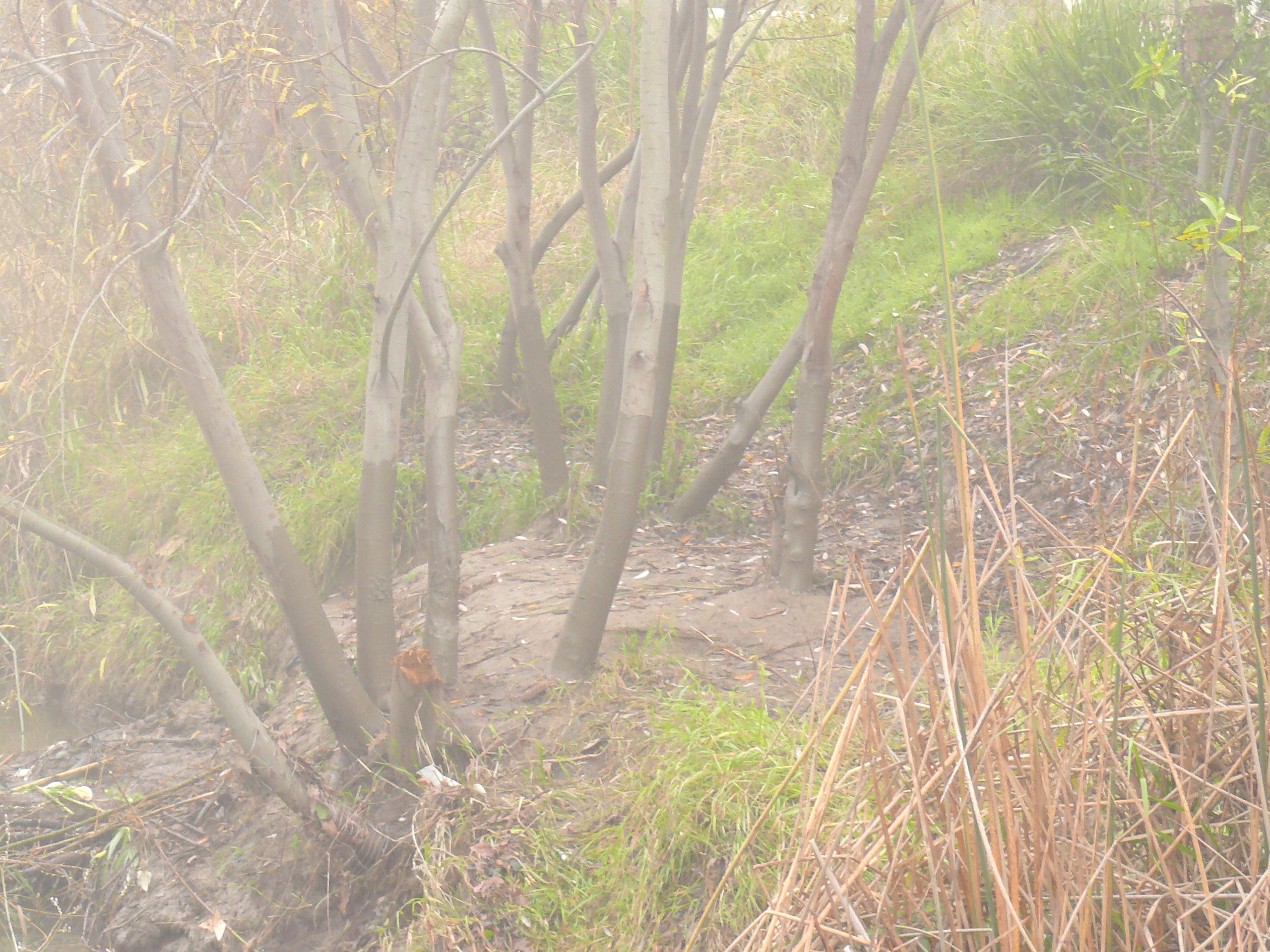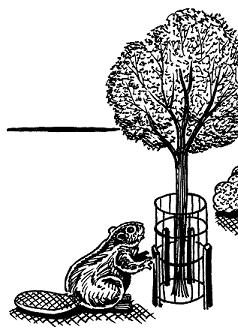There are two basic ways to protect trees and they both involve keeping the beavers away. Every once in a while we read a story about a city that cuts down trees in an area to make the beavers move out, but this is a very foolish idea and bad news for creeks and wildlife of all kinds. Trees can be inexpensively protected, this first way is an excellent tool for more public trees that you don’t want to cover with wire.
Abrasive Tree Paint Protection
Ingredients
1. Paint: Exterior Latex (choose a color to match the bark) 2. Mason Sand (30 mil or 70 mil) 3. Formula Mix 5 oz sand per quart of paint, or 4. Mix 20 oz sand per gallon of paint, or 5. Mix 140 gm sand per liter of paint.Make only in small batches at a time on the day you are going to apply it. Using too much sand will cause the mixture to roll off the tree. Apply paint to bottom three to four feet of tree trunk. For best results, do not paint every tree, leaving some for beaver food. This formula does not work for saplings, so protect them with wire fencing. This will need to be reapplied every couple of years, and in areas of snowfall you will need to cover for feet above the snowline.

If you are trying to protect a single tree or a very important tree, wire fencing may be a better option. The fencing will need to be at least a foot away from the circumference of the tree to allow for tree growth. Don’t forget to replace the wire as the tree grows! We see plenty of folk who try to protect trees from beavers and end up girdling them with too small of wire. Do NOT use chicken wire, since beavers are wayyyyyy bigger than chickens! The purpose of this heavy wire cylinder is simply to keep the beaver from getting to the tree. The cylinders can be made from 3 to 4 foot tall galvanized garden fencing (2″ x 4″ mesh).
Larger areas like vineyards can be protected with electric wire.
Remember that beaver chewed trees still have roots that retain soil and prevent erosion, and if left in the ground will ‘coppice’ which is a forestry term that refers to hard cutting back a tree so that it grows back more dense and bushy. This is why beavers result in such excellent nesting habitat.
Other resources:
Tree Protection: Project Beaver
Tree Protection: Ottawa-Carleton Wildlife Center
Tree Protection: Beaver Solutions
Protecting Trees and More: Beavers: Wetlands & Wildlife
Challenges: The Lands Council
Working with Beaver: Sherri Tippie and the Grand Canyon Trust
Wrapping trees: Skip Lisle Beaver Deceivers LLC
That should get everyone started. If you need more google “Beavers Tree Protection” and scan through your options!




One comment on “Protecting Trees”
[…] very moment. A woman who’s happy to see beavers is a friend of mine. I’ll make sure she has all the info she needs just in case. Near as I can tell Kristy is a real estate agent in Hannibal MO that has been doing great tree work […]